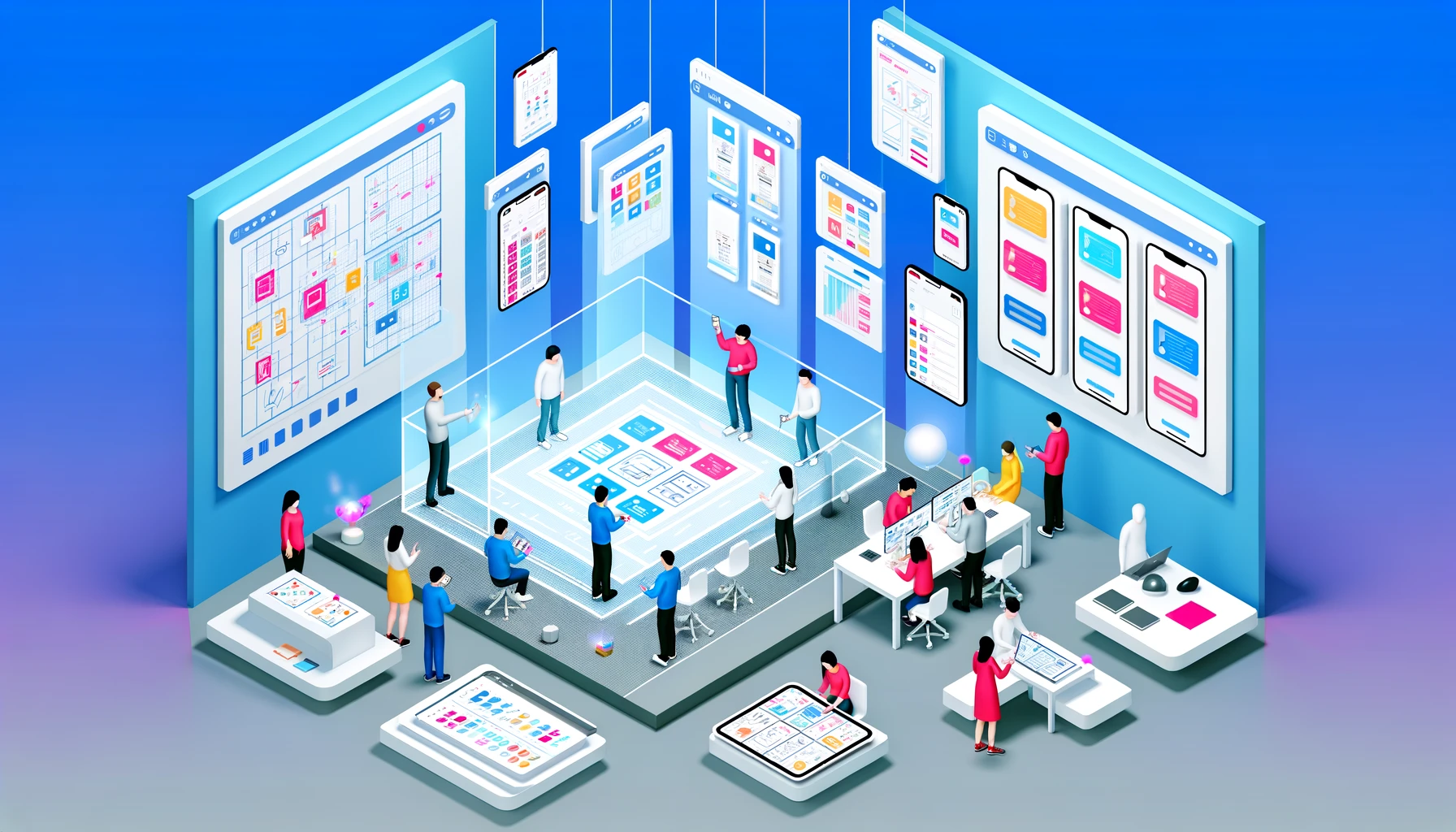
UI/UX design is a discipline focused on the design of user interfaces (UI) and user experiences (UX) for digital products and services. UI design involves creating the visual and interactive elements of a product, such as buttons, icons, and layout, to ensure an aesthetically pleasing and intuitive interface.
UX design encompasses the overall experience a user has with a product, including ease of use, efficiency, and satisfaction, aiming to optimize how users interact with, perceive, and use the product. Together, UI/UX design aims to create products that are not only visually appealing but also user-friendly, efficient, and enjoyable to use.
What’s the difference between UI/UX and graphic design?
The difference between UI/UX and graphic design lies in their focus, processes, and outcomes.
UI/UX design focuses on the overall experience and interaction users have with digital products, like websites or apps. It involves designing the interface for ease of use and crafting the user experience to ensure it’s intuitive and meets the user’s needs. This process involves understanding user behavior, developing wireframes, and creating interactive designs that facilitate a seamless and effective user journey.
Graphic design, on the other hand, is more concerned with the visual aspects of communication and presentation across various media. It involves creating graphics, typography, layouts, and images to communicate ideas or messages visually. Graphic design is used in branding, print media, advertising, and more, focusing on aesthetics and visual appeal.
In other words, while UI/UX design is specifically tailored to enhance usability and user satisfaction, graphic design serves a broader purpose of visual communication and can be applied across both digital and physical mediums.
What are the key aspects of UI/UX design?
- User research. Understanding the target audience’s needs, preferences, and behaviors through various research methods.
- Usability. Creating products that are easy and efficient to use, enhancing user satisfaction.
- Information architecture. Organizing and structuring content in a way that makes it easily accessible and understandable to users.
- Interaction design. Designing interactive elements like buttons and gestures to facilitate smooth interaction between the user and the product.
- Visual design. Crafting the visual elements of the interface, such as colors, typography, and layout, to create an aesthetically pleasing and coherent look.
- Prototyping. Developing prototypes to test and refine concepts, interfaces, and interactions.
- User testing. Gathering feedback from users to identify issues and areas for improvement.
- Accessibility. Ensuring that digital products are usable by people with a wide range of abilities and disabilities.
- Responsive design. Designing interfaces that adapt to different device sizes and orientations for a consistent user experience across platforms.
- Wireframing. Creating simple layouts to outline the structure of pages or screens within a product, focusing on functionality rather than visual design.
What does a UI/UX designer do for business?
UI/UX designers are essential for creating digital products that are both successful and user-friendly. Their work is vital in driving business growth and achieving long-term success. Why are they important for business?
- UI/UX designers improve user experience. A well-designed UI/UX can increase user satisfaction, engagement, and loyalty.
- They increase conversion rates. A user-friendly interface can help users complete desired actions, such as making a purchase or signing up for a service.
- They reduce development costs. Identifying usability issues early in the development process can save time and money compared to fixing them later in the development cycle.
- They enhance brand reputation. A positive user experience contributes to a strong brand reputation.
How much does a UI/UX designer make?
Surely, a UI/UX salary vastly depends on their experience and background. The thing that affects remuneration rates the most is their geographical position. Here are some annual averages in USD across regions as of 2024 according to Indeed, SalaryExpert, Glassdoor, JustJobs, DOU, and VietnamWorks:
- USA | $80,000 – $144,000 |
- Israel | $50,000 – $100,000+ |
- Poland | $35,000 – $80,000+ |
- Brazil | $30,000 – $70,000+ |
- Ukraine | $25,000 – $60,000+ |
- Vietnam | $20,000 – $50,000+ |
What are the best examples of UI/UX design?
The best examples of UI/UX design often come from widely used digital products and services celebrated for their intuitive interfaces and positive user experiences. Here are a few well-regarded examples across different categories.
Mobile apps
- Instagram. Simple and clean interface with a focus on visual content and discoverability.
- Airbnb. Seamless search and booking experience for finding unique accommodations.
- Apple Music. User-friendly music streaming with intuitive navigation and personalized recommendations.
- Duolingo. Gamified language learning app that makes learning engaging and fun.
Websites
- Apple. Minimalist design with a clear hierarchy and focus on product information.
- Dropbox. User-friendly cloud storage platform with intuitive file management and sharing features.
- Mailchimp. Streamlined email marketing platform with an easy-to-use design for creating and sending campaigns.
Software
- Adobe Photoshop. Industry-standard image editing software with a powerful yet customizable interface for professional users.
- Figma. Collaborative design platform with intuitive tools for creating and sharing user interfaces.
- Slack. A streamlined communication platform that simplifies team collaboration and information sharing.
You can check out the best designs of 2023 according to Apple to get a better perspective of modern UI/UX trends.


